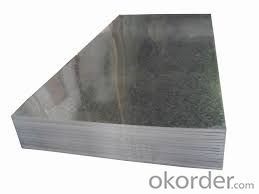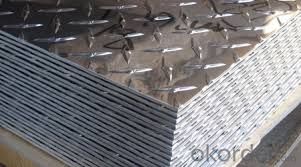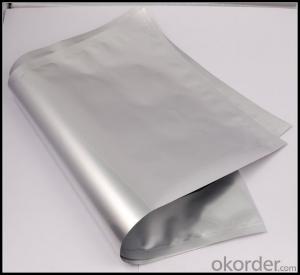Aluminum Sheets Prices 1050ps Litho Sheet Stock CTP CTP Stock
- Loading Port:
- Ningbo
- Payment Terms:
- TT or LC
- Min Order Qty:
- 1 m.t.
- Supply Capability:
- 500000 m.t./month
OKorder Service Pledge
OKorder Financial Service
You Might Also Like
| 1XXX SERIES | 1050PS LITHO SHEET STOCK CTP CTP CTOCK | PRITING | H18 H16 | 0.14—0.27 |
| 1050 1060 1060 1070 1100 ANODIZING STOCK DEEP DRAW STOCK | COSMETIC CAP STOCK CAP STOCK ALUMINUM CIRCLE STOCK ACP STOCK TREAD PLATE SPECULAR SHEET CABINET SHEET LIGHTING COMPONENT STOCK CAPACITOR SHELL STOCK | ALL TEMPERS | 0.2—4.5 | |
| 1A99 1070 1235、1100 FOIL AND FOIL STOCK | CAPACITOR FOIL,HOUSEHOLD FOIL, FOIL STOCK | H14 H18 | 0.02—0.3 |
Aluminum Sheet (Plate) is availble in various alloys offering a range of weldability, corrosion resistance and machinability. High strength Aluminum Sheet, such as 7075, can be used in aerospace applications, and high corrosion resistance aluminum alloy sheets are commonly used in marine applications.



5052-H32 Aluminum Sheet - (ASTM B209, QQ-A-250/8) Superior corrosion resistance, good weldability, with excellent formability, makes 5052 Aluminum Sheet a common choice for chemical, marine or saltwater applications. 5052 Aluminum Sheet applications include: tanks, marine hardware, boat hulls, etc.
Non-magnetic, Brinell = 60, Tensile = 33,000, Yield = 28,000 (+/-)
6061-T651 Aluminum Sheet - (ASTM B209, QQ-A-250/11) Offers a combination of increased strength, corrosion resistance, and machinability making it the most widely used aluminum grade. 6061 Aluminum Sheet is heat treatable, resists cracking due to stress, is easy to weld and machine, but limited on formability. 6061 Aluminum Sheet is ideal for structural framing, base plates, gussetts, motorcycle & automotive parts, etc.
Non-magnetic, Brinell = 95, Tensile = 45,000, Yield = 40,000 (+/-)
- Q: What is the thickness of an aluminum sheet?
- The thickness of an aluminum sheet can vary depending on the specific application and requirements. Aluminum sheets are available in a wide range of thicknesses, typically ranging from 0.006 inches (0.15mm) to 0.25 inches (6.35mm) or even thicker. The thickness is usually measured in gauge, with higher gauge numbers indicating thinner sheets. It is important to consider the intended use and desired properties, such as strength, flexibility, or weight, when selecting the appropriate thickness for an aluminum sheet.
- Q: need help choosing an aluminum welder at a descent price also
- It all depends on what you are doing. For light duty stuff 1/8 to 1/4 inch a spool gun will be the cheapest option. For intricate work tig. For production a push pull unit with a pulse arc but these are big $.
- Q: Hi I am getting a laptop pretty soon and have pretty much decided on a Mac. But really a white macbook is $1150, and aluminum is $1400. And just so no one says this, the white one is updated with all the same hardware(Advanced graphics, etc.) I want to get it asap so the $250 would mean about 2 months longer which would kind of be a drag. I also understand the aluminum doesn't have a firewire port, but idk what the hell that even is so can someone explain what it is and why I would care about it. Basically, is it worth the 2 months and $250 for the aluminum. Thanks.
- in case you'd be utilising it for surfing the internet and doing papers for college the macbook white will be proper for you. The aluminum macbook is an same pc, except aluminum with more advantageous efficient technical specs (more advantageous RAM, swifter processor etc.) this stuff gained't make a lot of a large difference in case you only plan to apply be conscious processor and the internet. The aluminum might want to be more advantageous efficient in case you watch extremely some video clips on youtube and such, the aluminum macbooks are not getting as warm as quickly because the plastic ones do. The macbook air is something so that you could only purchase for stylish applications, it has a lot less skill than both the macbook white and the macbook aluminum, for a larger value ticket simply by this is portability. wish this enables! i'm a contemporary consumer of a 2.4 macbook aluminum btw :)
- Q: What are the different fabrication methods used for aluminum sheets?
- There are several different fabrication methods used for aluminum sheets, each with its own advantages and applications. Some of the most common methods include rolling, extrusion, casting, and stamping. Rolling is the most commonly used method and involves passing the aluminum through a series of rollers to reduce its thickness and create a flat sheet. This method allows for precise control over the thickness and shape of the sheet, making it ideal for a wide range of applications, from packaging to building materials. Extrusion is another popular method where heated aluminum is forced through a die to create a specific shape or profile. This method is commonly used for creating complex shapes such as tubes, rods, and channels. Extruded aluminum sheets offer high strength and durability, making them suitable for structural applications in industries like construction and automotive. Casting involves pouring molten aluminum into a mold and allowing it to solidify. This method is often used for creating intricate and detailed shapes that cannot be easily achieved through other methods. Casting can produce aluminum sheets with unique textures and designs, making them popular in decorative applications. Stamping is a method that uses a press to shape the aluminum sheet by applying pressure and forming it into a desired shape. This technique is commonly used for creating small, precise parts like brackets, connectors, and electrical components. Stamped aluminum sheets offer excellent dimensional accuracy and can be produced in high volumes at a relatively low cost. In addition to these methods, other fabrication techniques such as welding, bending, and laser cutting can be used to further process aluminum sheets and create custom shapes and designs. Overall, the choice of fabrication method for aluminum sheets depends on the desired application, required properties, and complexity of the desired shape. Each method offers unique advantages and capabilities, allowing for a wide range of possibilities in terms of aluminum sheet fabrication.
- Q: Can aluminum sheets be used for wall cladding?
- Yes, aluminum sheets can be used for wall cladding. Aluminum is a popular choice for cladding due to its lightweight nature, durability, and corrosion resistance. It can be easily shaped and installed, making it a versatile option for various architectural applications, including wall cladding.
- Q: This question asks for methods to protect aluminum sheets from damage during the installation process.
- <p>To prevent damage to your aluminum sheets during installation, follow these steps: Use protective gloves to avoid scratches from hand contact. Handle the sheets with care, especially at the edges and corners. Keep the surface clean and dry to prevent any dirt or moisture that could cause damage. Use appropriate tools designed for aluminum to avoid marring the surface. Ensure the installation site is free from debris that could cause scratches or dents. Install the sheets in a controlled environment to avoid exposure to harsh weather conditions. Finally, consider using a protective film or cover on the aluminum sheets until they are fully installed.</p>
- Q: What is the electrical conductivity of 101 aluminum sheets?
- The electrical conductivity of 101 aluminum sheets would depend on various factors such as the thickness of each sheet, the purity of the aluminum, and any possible impurities or alloying elements present. Generally, aluminum is known for its relatively high electrical conductivity compared to other metals. However, without specific information about the aforementioned factors, it is difficult to provide an exact value for the electrical conductivity of 101 aluminum sheets.
- Q: How to press multilayer aluminum sheets (aluminum sheet's thickness: 0.2mm) together and keep them inseperate after pressing?
- resistance welding usually overlays two pieces together and presses them, heating them to melting state through current, you can try multiple sheets.
- Q: Can aluminum sheets be used for automotive applications?
- Yes, aluminum sheets can be used for automotive applications. Aluminum is lightweight, strong, and has excellent corrosion resistance, making it an ideal material for various automotive components such as body panels, hoods, doors, and engine parts.
- Q: How does aluminum sheet perform in extreme temperatures?
- Due to its unique properties, aluminum sheet exhibits exceptional performance in extreme temperatures. One of its key advantages is its remarkable thermal conductivity, enabling it to efficiently transfer heat. This characteristic allows aluminum sheet to quickly adapt to extreme temperatures, preventing the occurrence of warping or cracking that may be experienced with other materials. Moreover, aluminum possesses a high melting point of approximately 660 degrees Celsius, rendering it highly suitable for usage in high-temperature environments. It remains structurally stable, retaining its strength and integrity even when subjected to intense heat. Additionally, aluminum exhibits a low coefficient of thermal expansion, resulting in minimal expansion and contraction in response to temperature fluctuations. This particular attribute enables aluminum sheet to maintain its shape and dimensions even when exposed to drastic temperature changes. Furthermore, aluminum showcases exceptional corrosion resistance, further augmented by the formation of a natural oxide layer on its surface. This oxide layer serves as a protective barrier against chemical reactions, safeguarding the aluminum from deterioration even in harsh environments or extreme temperatures. In conclusion, aluminum sheet demonstrates outstanding performance in extreme temperatures due to its high thermal conductivity, high melting point, low coefficient of thermal expansion, and excellent corrosion resistance. These properties establish it as a reliable choice for a multitude of applications, including the aerospace, automotive, and industrial sectors, where the ability to perform under extreme temperatures is of utmost importance.
Send your message to us
Aluminum Sheets Prices 1050ps Litho Sheet Stock CTP CTP Stock
- Loading Port:
- Ningbo
- Payment Terms:
- TT or LC
- Min Order Qty:
- 1 m.t.
- Supply Capability:
- 500000 m.t./month
OKorder Service Pledge
OKorder Financial Service
Similar products
Hot products
Hot Searches
Related keywords
































